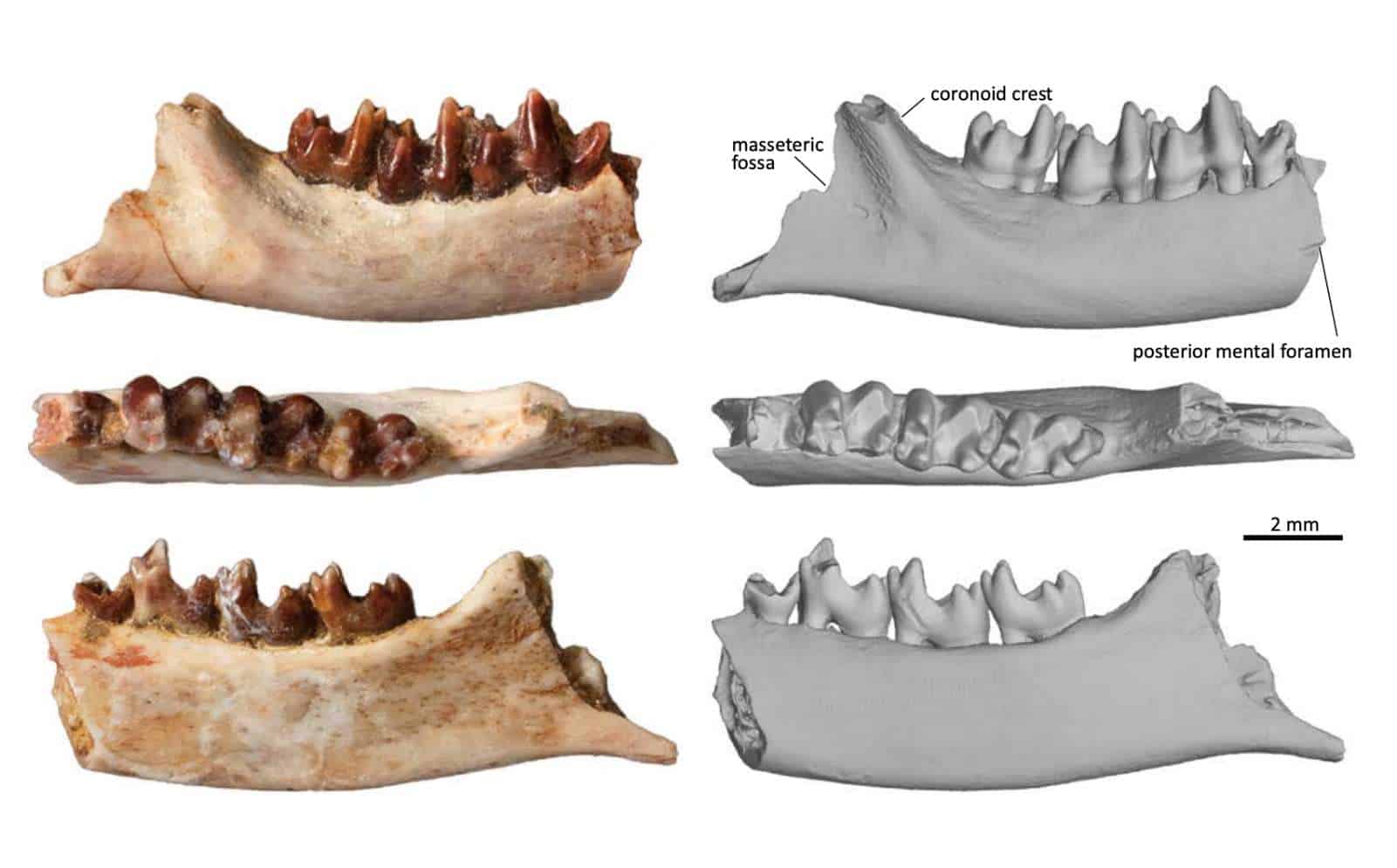

A scientific team discovered a previously unknown species of tiny mammal in the Gobi Desert of Mongolia. The animal lived during the Late Cretaceous period, when dinosaurs still roamed the Earth.
The fossil, which includes part of a lower jaw measuring just one centimeter, was found in 2019 during a joint expedition to the Baynshire Formation. The site, rich in ancient rock layers, lies deep in the Gobi Desert and dates back over 66 million years.
The new species, which the team calls Ravjaa ishiii, honors two individuals who played key roles in the region’s history and science. The first, Danzanravjaa, was a respected Buddhist monk from the 19th century.
The second, Kenichi Ishii, was the late director of Japan’s Hayashibara Museum of Natural Sciences and helped build the Mongolia-Japan research partnership that led to this discovery.
The findings were published in the journal Acta Palaeontologica Polonica. Researchers from Okayama University of Science in Japan and the Mongolian Academy of Sciences collaborated on the study.
The initial analysis showed that the fossil belonged to a group of ancient mammals called zhelestids. These animals were once believed to live primarily near ancient coastlines. However, this discovery, found deep inland, suggests they had a much wider range.

The fossil stood out because of its unusual features. Its molars were taller than some other species it was related to, and the jaw had a distinctive shape. These differences led scientists to declare it a new genus and species.
The team also noted the importance of the site’s age. The Baynshire Formation’s rocks date to a period when flowering plants were becoming common.
The strong teeth of Ravjaa ishiii suggest it may have eaten seeds or fruits, giving researchers a clue that early mammals were already adapting to changing plant life.
Tsukasa Okoshi, lead author of the study and a doctoral student at Okayama University of Science, said the pandemic delayed the research. But the team remained committed.
“We were finally able to establish the scientific importance of this specimen,” Okoshi said.
“We hope this research will serve as a starting point for further taxonomic studies of other small vertebrate fossils from the same site and era and will ultimately help uncover the rich biodiversity, including dinosaurs, that once inhabited the Gobi Desert during the age of dinosaurs.”
Professor Mototaka Saneyoshi, who also worked on the project, called the find remarkable. “Finding such a tiny fossil in the vast expanse of the Gobi Desert feels like a gift from the Gobi Desert. It’s nothing short of miraculous.”
The discovery adds to the growing list of ancient mammal species in Mongolia and helps scientists better understand how life on Earth changed during the final age of the dinosaurs.
